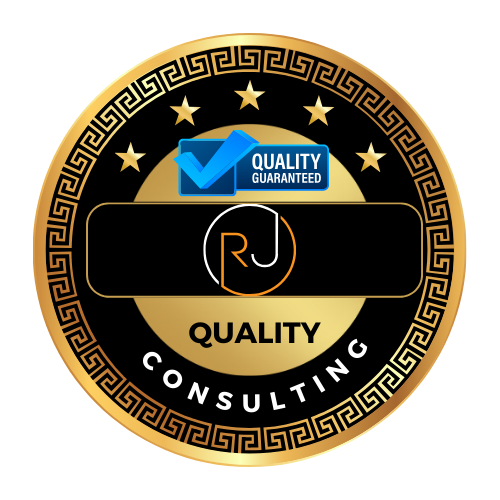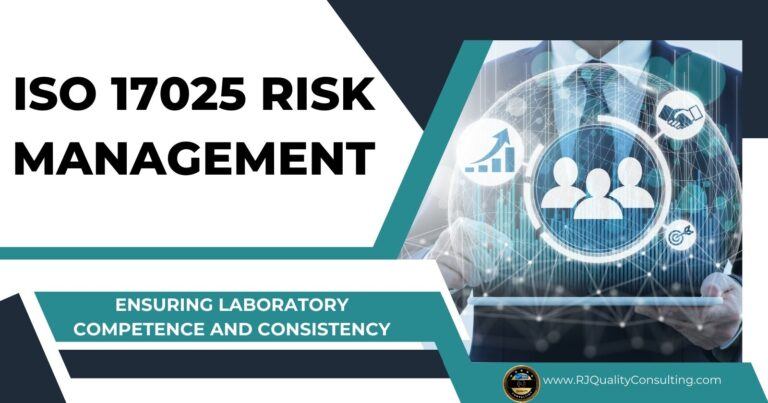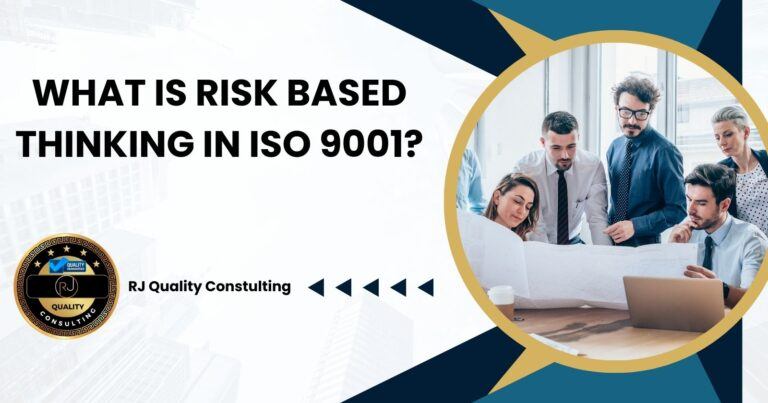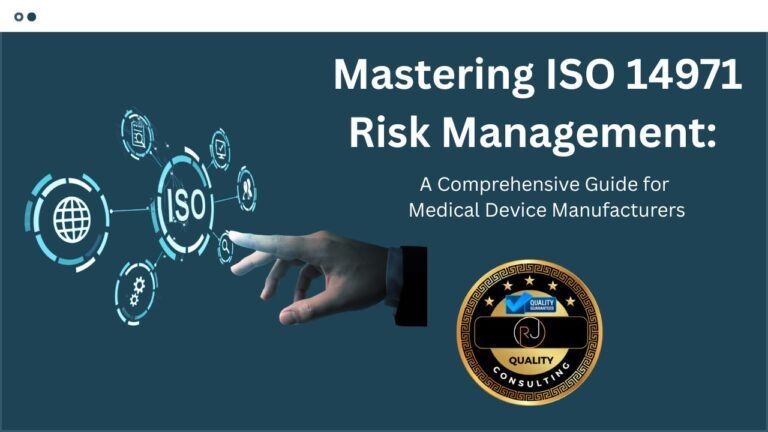What is Risk Assessment and Risk Management? Key Concepts, Processes, and Benefits
Risk assessment and risk management keep your business safe and on track. So, what is risk assessment and risk management all about? Risk assessment means finding, analyzing, and understanding risks that could hurt your company. Risk management is about actually doing something to reduce or control those risks. They work together to help you protect your assets, reputation, and financial health. It’s not just about ticking boxes—it’s about real-world protection.
If you get how risk assessment and management work, your organization can bounce back faster when things go wrong. Spotting problems early lets you figure out your risk appetite (how much risk you’re willing to take) and make smarter calls. This kind of thinking also helps you meet standards and stay on the right side of industry rules.
Key Takeaways
- Risk assessment finds and evaluates threats to your business.
- Risk management uses this info to control or reduce those threats.
- Knowing both helps protect your company’s financial health and stability.
Understanding What is Risk Assessment and Risk Management
Risk assessment helps you spot, analyze, and evaluate possible dangers before they turn into real headaches. If you follow a clear process, you can identify hazards, check out their impact, and figure out what to do to lower the risk. The types of risks and how you handle them can look pretty different in labs, factories, or inspections.
📘 ISO/IEC 17025 Quality Manual Template
Accelerate your lab’s accreditation process with our comprehensive Quality Manual Template, designed to align with ISO/IEC 17025:2017 standards.
- Fully editable and customizable to fit your laboratory’s needs.
- Includes all necessary procedures, forms, and policies.
- Structured to facilitate easy implementation and compliance.
- Developed by experts with extensive ISO/IEC 17025 experience.
What Is Risk Assessment?
Risk assessment is a careful process for figuring out what could go wrong in your workplace. You look for hazards—maybe unsafe equipment or nasty chemicals—that might cause accidents or health issues.
For each risk, you ask: how likely is this to happen, and if it does, how bad would it be? That way, you get a clear risk profile—a snapshot of all the risks facing you.
Your main aim is to protect people, products, and processes from harm. Risk assessment usually kicks off your whole risk management plan.
Key Elements Of A Risk Assessment Process
A good risk assessment process has a few main steps:
- Identify Hazards: Spot things that could cause harm, like equipment faults or chemical spills.
- Assess Risks: Figure out how likely each hazard is and how serious it would be.
- Evaluate Control Measures: Check what’s already being done to keep risks in check.
- Record Findings: Write down your results and your plan for each risk.
- Review Regularly: Update your assessment when things change or after something goes wrong.
These steps help you actually reduce health and safety risks with real-world controls, not just paperwork.
Types Of Risks In Laboratory, Manufacturing, And Inspection Contexts
Every setting brings its own flavor of risk.
In labs, you might run into chemical exposure, fire, or equipment failures. Handling toxic stuff or sharp tools? That’s always dicey. In manufacturing, you’re up against machinery accidents, electrical hazards, or damage from storms. Ergonomic risks and repetitive strain injuries sneak up, too.
Inspections can throw you into unfamiliar environments, expose you to unguarded machines, or leave you dealing with safety systems that don’t work. If you keep an eye out for these kinds of vulnerabilities and plan ahead, your workplace runs smoother and stays safer.
What Is Risk Management?

Risk management is your organized way to spot threats, measure their impact, and take action. If you do this right, you help your organization dodge financial loss, legal headaches, or other nasty surprises.
Definition And Purpose Of Risk Management
Risk management means finding, evaluating, and dealing with risks. A risk can be anything that gets in your way—money problems, accidents, data breaches, or even natural disasters.
Your goal is to cut down on negative impacts or stop risks before they turn into real problems. If you’re proactive, you can protect your resources—money, time, and reputation. Solid risk management also helps your team make smarter decisions and plan for what’s next.
The Relationship Between What is Risk Assessment and Risk Management
Risk assessment is a crucial part of risk management. In the assessment, you hunt for possible threats and measure how likely and how bad they’d be. This helps you set your priorities and see what needs your attention first.
Once you’ve got your assessment, risk management steps in. You decide how to respond: avoid, control, transfer (maybe with insurance), or just accept the risk if it’s minor. Your choices depend on the impact and your options. If you skip the assessment, you’re basically flying blind.
The Risk Management Process (Identification, Evaluation, Control, Monitoring)
The risk management process usually looks something like this:
- Risk Identification: Start by finding possible risks. Talk to your team, review records, or use checklists.
- Risk Evaluation: Rate each risk. How likely is it? How bad could it get? Risk matrices are handy here.
- Risk Control: Choose how you’ll handle each risk. Avoid, reduce, transfer, or accept it. Usually, you’ll want a clear mitigation plan.
- Continuous Monitoring and Review: Risks shift over time, so keep an eye on them. Monitoring tells you if your controls are working and helps you react when new risks pop up.
The Role Of Risk Assessment & Management In ISO Standards

Risk assessment and management are at the core of many ISO standards. These tools help you spot, control, and cut down risks—so you keep quality high, operations steady, and your reputation solid.
ISO/IEC 17025: Risk-Based Approach In Testing & Calibration Laboratories
ISO/IEC 17025 wants testing and calibration labs to take a risk-based approach. You need to look at activities that could impact your lab’s work, quality, and results.
Labs check risks that could mess with test data—equipment failures, staff mistakes, and so on. These assessments guide your actions to lower the odds of problems and show you’ve got real controls in place.
A strong risk-based system helps you avoid errors before they happen and builds trust in your lab’s accuracy and reliability.
ISO/IEC 17020: Risk In Inspection Bodies
ISO/IEC 17020 focuses on inspection bodies that check products, systems, or services. You need to consider and manage risks that could affect your inspection process and impartiality.
Find risks that might mess with objectivity, consistency, or reliability—like conflicts of interest, bad equipment, or fuzzy requirements.
To handle these, set up controls such as staff training and clear separation of duties. Keep records of your risk management steps to ensure valid results and keep clients’ trust.
ISO 9001:2015 – Risk-Based Thinking In Quality Management Systems
ISO 9001:2015 really leans into “risk-based thinking.” You’re expected to find risks and opportunities at every stage of your quality management system.
Risk assessment here isn’t just about avoiding problems—you’re also looking for ways to improve and prevent headaches. Plan your actions based on how likely and serious a risk is, then review what actually works.
Key activities include:
- Finding process weaknesses
- Setting up preventive controls
- Reviewing controls for effectiveness
This approach boosts risk awareness and gives customers better quality, plain and simple.
AS9100: Risk Management In Aerospace Quality
AS9100 is the gold standard for aerospace manufacturers and suppliers. You’re expected to manage risk throughout your product’s life—from design to delivery.
You need to spot and address risks that could impact safety, compliance, reliability, and deadlines. Think poor supplier performance, design flaws, or process changes.
Make sure you:
- Record risk assessments
- Track what actions you take
- Monitor for ongoing or new risks
Systematic risk management keeps aerospace projects safe and on schedule—pretty much a must in this high-stakes field.
ISO 13485: Risk Management For Medical Devices
ISO 13485 is all about medical device organizations. Here, risk management is the backbone of product design, production, and distribution.
You’re required to:
- Identify and assess risks tied to device use, production, and patient safety
- Use controls like design tweaks or extra checks
- Confirm that your controls actually work and lower the danger
Every risk-related step needs clear records for regulators and customers. This standard ties quality management to patient safety, making sure your devices stay safe, effective, and compliant.
To learn more about risk management in quality systems, visit the ASQ Risk Management Resource Center.
How To Implement Effective Risk Assessment And Management (Practical Steps)

If you use the right process for risk assessment and management, you’re better equipped to spot threats, analyze them, and figure out your next move. The right tools, clear documentation, and solid training help you react fast as things change.
Step-By-Step Guide To Risk Assessment (Identification, Analysis, Evaluation)
Start by identifying every possible risk in your environment or process. Look for hazards that could hit your operations, data, staff, or reputation. Training your team to catch issues early really helps.
Next, analyze each risk using a risk assessment matrix. This tool lets you rate risks by likelihood and impact. Fill it out by scoring risks from low to high for both. It’s a quick way to see which problems could hurt you most.
Now, evaluate the risks. Decide if your current controls are enough or if you need to step things up. A risk management framework can help you prioritize, so you tackle the biggest threats first.
Risk Management Tools And Techniques (FMEA, Risk Registers, Etc.)
There are a bunch of tools out there to help you manage risks. Failure Mode and Effects Analysis (FMEA) digs into where and how failures might happen, and what kind of mess they could make. FMEA breaks down your process step by step and checks for weak spots.
Risk registers are basically lists—on paper or digital—that track each risk, its status, your response plan, and who’s responsible. Keeping the register updated keeps everyone in the loop.
If you use automation, you can speed up things like updating registers or sending alerts when new risks pop up. Digital risk management tools often come with dashboards, reminders, and templates to keep your team organized and ready to move.
Documentation And Record-Keeping Requirements
Honestly, good record-keeping makes risk management so much easier. You’ve got to write down all your risk assessments, decisions, actions, and what happened after. Simple forms, checklists, or even basic software keep things from falling through the cracks.
Keep your documents somewhere safe but not so locked down that no one can find them. Only trained folks should have access—protecting sensitive info and keeping you out of trouble with compliance rules.
Look over your records regularly and add anything new you find or do. Detailed documentation comes in handy for training new staff and makes tracking your progress way less painful.
Auditor’s Tips: Ensuring Compliance And Adding Value

When auditors come in, they want to see risk assessment practices that are clear, organized, and actually support compliance—not just a bunch of paperwork. Sure, they’re looking for problems, but they’re also thinking about how you can squeeze more value out of your risk management efforts.
Common Pitfalls And How To Avoid Them
One of the biggest slip-ups? People don’t update their risk assessments often enough. Risks change, so if your process just sits there, you’ll miss new issues.
Poor documentation is another headache. If you don’t clearly track risk data or corrective actions, proving compliance or catching repeat problems gets tricky fast.
Sometimes teams forget to loop in management or key stakeholders, and that’s just asking for missed risks and weak support for corrective actions. To dodge these problems, set clear criteria, review assessments at least once a year, and keep your records tidy so auditors can actually find what they need.
How Auditors Evaluate Risk Processes
Auditors usually start by digging into how you spot, judge, and rank risks. They want to see you’ve set real criteria and that you’re thinking about fraud, noncompliance, and supplier risks too.
They check out your corrective action process. Auditors want proof that you’re tracking CAPA activities from the moment you find an issue all the way to fixing it, and that you’re actually getting to the root cause, not just slapping on a band-aid.
They also want to see you’re tying risks to real compliance needs. For supplier stuff, a solid supplier corrective action process shows you’re not just focused on your own shop. If you use established frameworks and track how well your mitigation steps work, that’s even better.
Value-Added Approaches From A Certified Auditor’s Perspective
From where I stand as a certified auditor, I always tell folks to go beyond just ticking boxes. Use your risk assessment results to make decisions, not just fill out forms for the sake of it.
Here’s what a value-added approach looks like:
- Hold regular, focused risk reviews with management and stakeholders
- Actually learn something from past corrective actions—don’t just file them away
- Track CAPA in a way that lets you spot trends and recurring headaches
- Work with your suppliers to build a real supplier corrective action process
If you treat risk management as something alive—constantly moving—you’ll find cost savings, make your systems more reliable, and keep compliance sharp. Simple dashboards or tables that show risk status and CAPA progress go a long way in keeping everyone on the same page and pushing forward.
Benefits Of Robust Risk Assessment And Management
A solid risk assessment and management setup helps your business dodge problems, protect people, and stay in the game. Make these activities a priority and you’ll see fewer business risks and smoother operations day to day.
Improved Compliance And Reduced Nonconformities
Sticking to a thorough risk assessment plan means you’re hitting all the right local, national, and industry rules. That keeps fines or legal headaches at bay. For example, spotting hazards and acting early keeps you on the right side of workplace safety and environmental laws.
Good risk management also means fewer nonconformities. You catch and fix issues before they turn into bigger messes. This really matters during audits or inspections. Having detailed records on hand makes it easy to show you’re following the rules.
As people start to get why compliance matters, you build a culture of risk awareness. Folks know what to watch for, so mistakes and accidents drop off.
Enhanced Operational Efficiency And Customer Confidence
When you’re proactive about risks, disruptions shrink. Fewer accidents, breakdowns, or breaches mean your business just runs better. You use your resources—time, money, people—smarter because you’re preventing headaches instead of always reacting.
Customers notice when you handle risks well. If you keep incidents low and respond quickly, you earn a reputation for being reliable. That’s good for keeping clients around and attracting new ones.
Your processes get stronger and meeting quality standards becomes less of a struggle. That usually means fewer customer complaints and happier clients overall.
Real-World Examples And Case Studies
Take a manufacturing company that checks equipment hazards regularly—they’re way less likely to get hit with expensive machine breakdowns. Maybe they spot a worn part early and avoid shutting down the whole line for days.
Or think about a hospital that trains staff to follow hygiene protocols closely. Infection rates drop, and they stay on track with health compliance standards.
In food service, chain restaurants that run frequent food safety risk reviews cut down on foodborne illnesses, boost customer trust, and dodge legal trouble over health codes.
These kinds of examples really show how risk assessment and management can protect your business, keep you compliant, and build trust with your customers.
Conclusion
Risk assessment helps you spot hazards and figure out their impact. Risk management is about putting controls in place to tackle those risks. Getting both right means you’re protecting people, assets, and processes.
Recap Of Key Points
Risk assessment boils down to three steps:
- Identifying hazards: Find things that could cause trouble.
- Analyzing risks: Decide how likely and serious each risk is.
- Evaluating risks: Pick which risks need action.
Risk management takes it further. Once you know the risks, you choose your controls, set policies, and check if your fixes actually work. Both sides are critical if you want to stay safe and out of legal hot water.
The Ongoing Importance Of Risk-Based Thinking In ISO Standards
ISO standards (like ISO 9001) want you thinking about risk all the time—not just once and done. Risks shift as your business, tech, or the rules change.
Risk-based thinking means:
- Factoring risks into your decisions
- Updating processes when new threats or chances pop up
- Keeping an eye on what’s working (and what isn’t)
ISO wants risk to be part of your daily routine. Over time, this approach boosts quality, safety, and trust with your team and your customers.
Your Final Thoughts As A Certified Auditor
Honestly, risk management isn’t a one-and-done deal. You’ve got to check that teams are staying up to date with new risks and controls. My job is to make sure people get both the “what” and the “why” behind every risk management step.
Remind your team to document what they find and what they do about it. Push for regular reviews, open communication, and learning from slip-ups. When you encourage open discussion and follow-through, you help keep risks down and improvements rolling in.
Frequently Asked Questions
Risk assessment helps you spot and judge risks. Risk management is about taking action to deal with them. You need both for safety, compliance, and business success.
How are risk assessment and risk management integrated in the decision-making process?
You use risk assessment to find and understand threats before making decisions. Risk management then helps you pick what to do based on what you’ve learned.
This combo leads to smarter choices about resources, safety, and goals. Linking both helps you avoid or soften the blow when making big decisions.
What are the key differences between risk assessment and risk management?
Risk assessment is about spotting risks and judging how bad they could be. You focus on identifying, analyzing, and evaluating each threat.
Risk management kicks in after that. You plan, act, and monitor ways to cut down the chance or impact of those risks. So, assessment asks “what could happen?” and management answers “what should we do about it?”
Can you provide examples of effective risk assessment and management in a business context?
Say you’re worried about data breaches. You’d assess risk by looking at your system security and past problems. If you find weak spots, you manage the risk by adding firewalls or stronger passwords.
Or in supply chain management—you might spot a risk with relying on a single supplier. To manage it, you’d diversify suppliers or keep some safety stock on hand.
How is risk assessment used in occupational health and safety to minimize hazards?
On the job, you find hazards like exposed wires or slippery floors through inspections. Then, you figure out how likely accidents are and how bad they’d be.
With that info, you manage risk by adding safety guards, giving extra training, or setting new rules to keep injuries and illness down.
What are the main steps of the risk management process?
You start by identifying risks. Next, you assess how likely each one is and what kind of damage it could do.
Then, you choose what to do about each risk (sometimes called treating the risk). Put your plan into action, and keep an eye on things to make sure risks stay in check.
In what ways does safety risk management contribute to overall risk mitigation strategies?
Safety risk management tackles hazards that could hurt people or damage property. By addressing these dangers head-on, you’re not just keeping your team safe—you’re also dodging unnecessary costs and sidestepping legal messes nobody wants to deal with.
Honestly, these efforts plug holes in your broader risk strategy and beef up your organization’s defenses against bigger headaches. Safety isn’t just a checkbox; it’s woven into keeping everything (and everyone) running smoothly.
🕒 Book Your Free 45-Minute Consultation
Have questions about ISO/IEC 17025 or ISO 9001 implementation or accreditation? Schedule a free 45-minute consultation with me to discuss your Company or laboratory’s needs and how we can achieve compliance together.
Schedule Your Consultation





